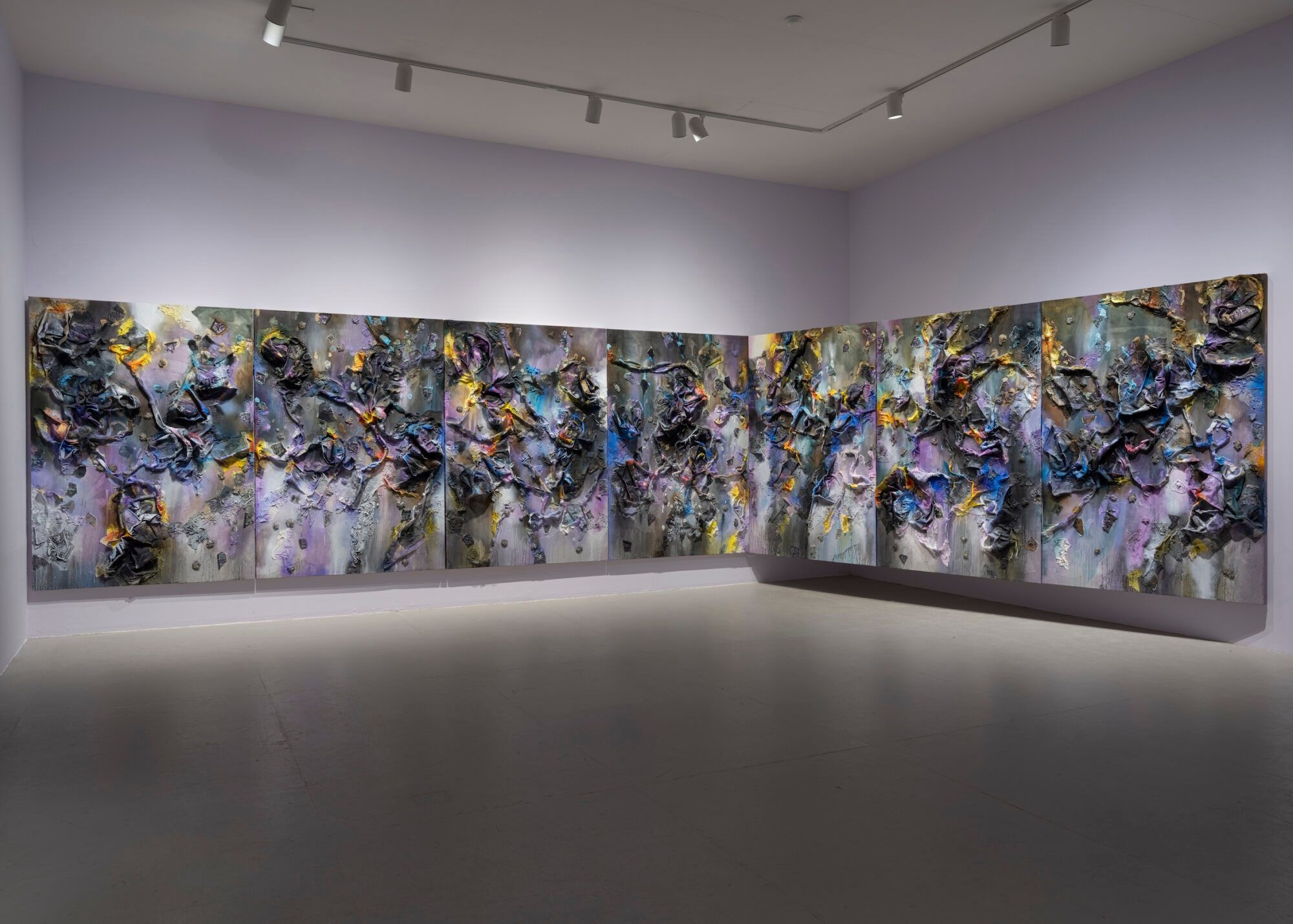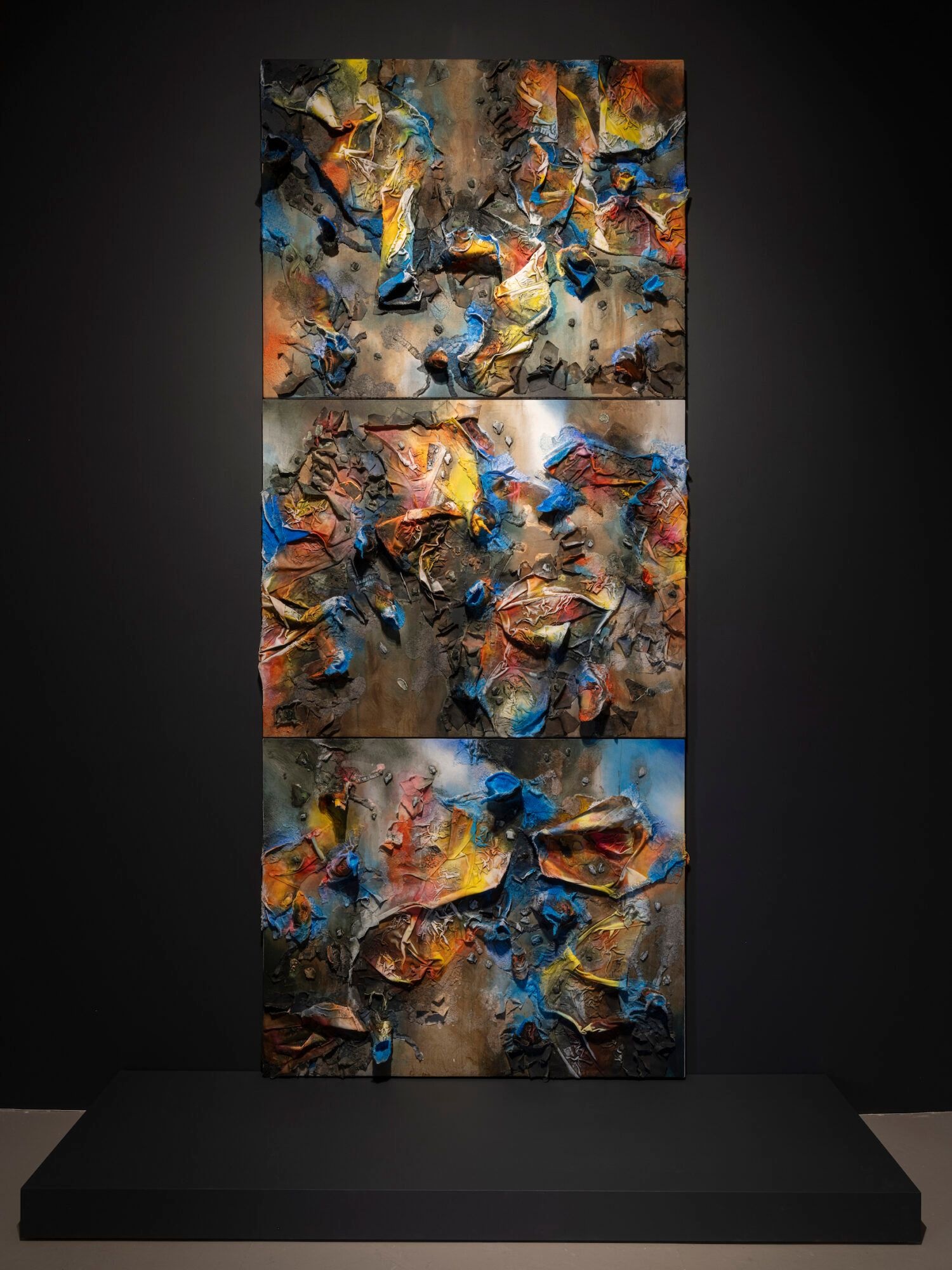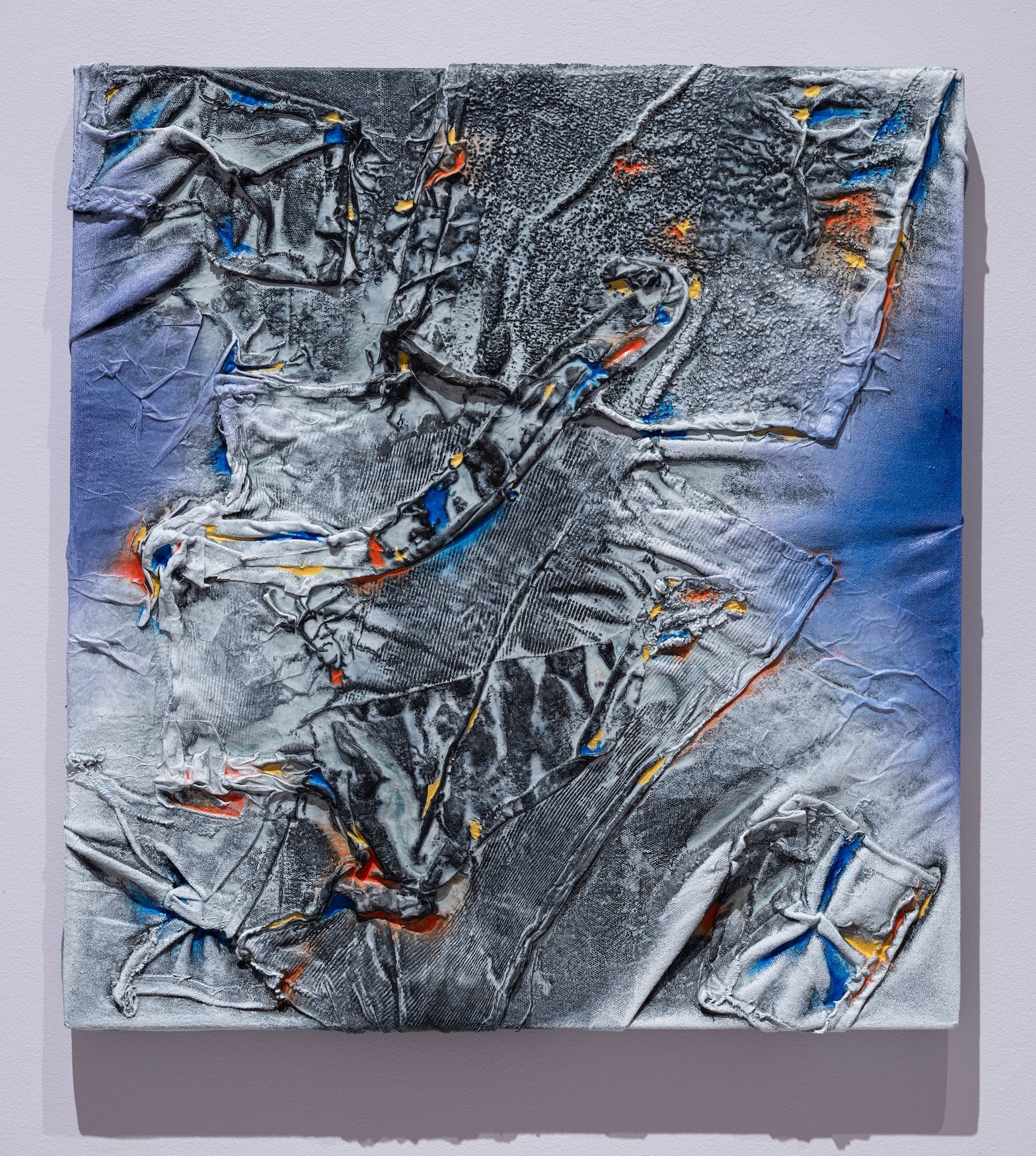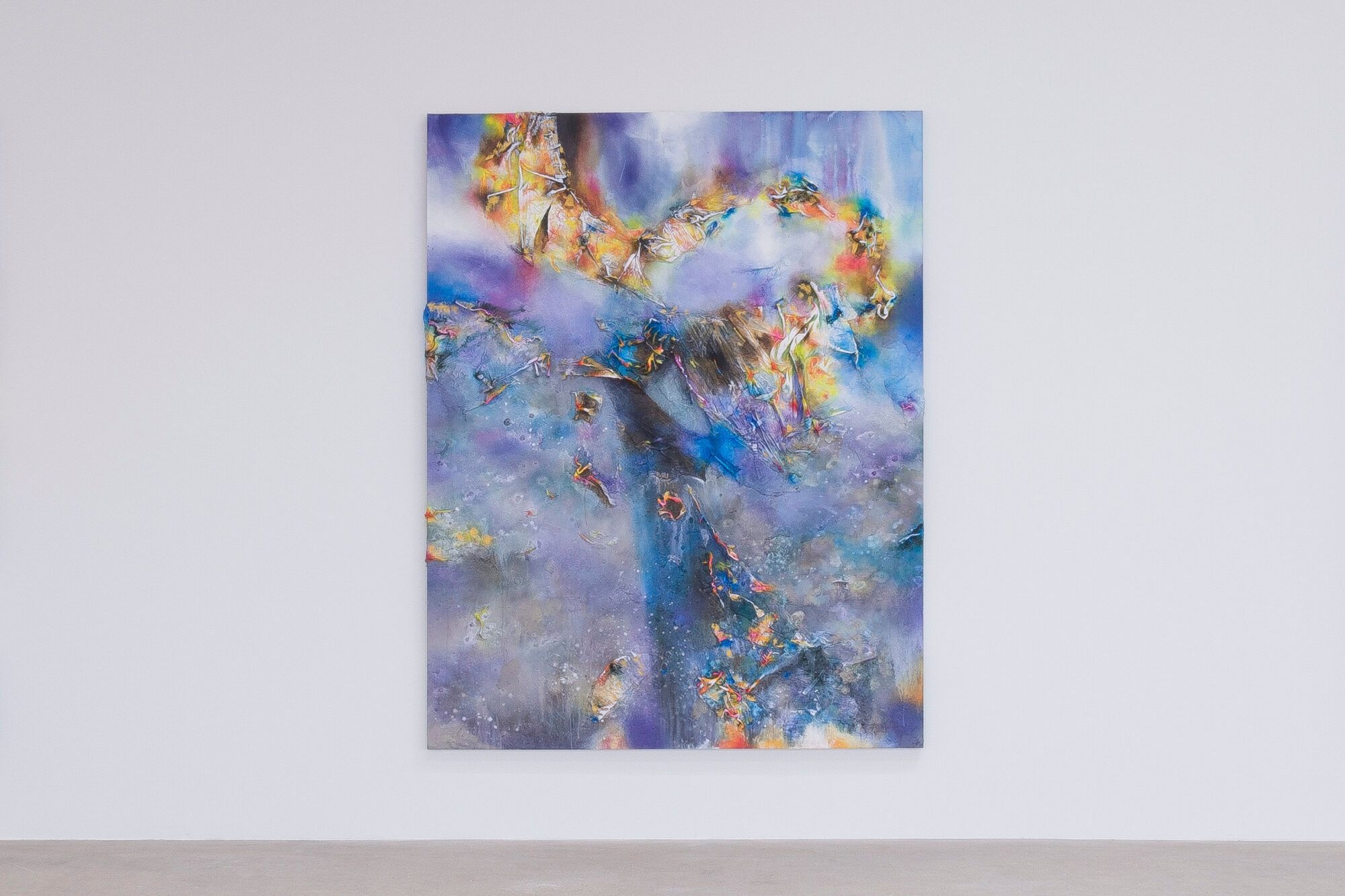This month, we profile contemporary artist Leslie Martinez, explore AI-generated art, and examine the health benefits of Baking Soda.

Leslie Martinez: A Celestial Odyssey in Color
In the bustling heart of New York City, where creativity flows like a river, Leslie Martinez’s artistry shines like a beacon, illuminating the path to a world of wonder and imagination. With their latest exhibition at MoMA PS1, Martinez invites us on a mesmerizing journey through the cosmos of their mind, where colors collide and forms converge in a dance of creation.

Born under the vast skies of Texas, Martinez’s artistic journey began in the borderlands of the Rio Grande Valley, where the rich tapestry of cultures and landscapes shaped their worldview. It was here, amidst the dusty roads and checkpoint crossings, that Martinez first encountered the complex interplay of belonging and exclusion that would become a recurring theme in their work. Inspired by the writings of José Esteban Muñoz and the teachings of Chicano scholar Tomás Ybarra-Fausto, Martinez embarked on a quest to redefine the boundaries of identity and possibility.
Drawing upon a cosmic palette rooted in the CMYK color model, Martinez’s paintings pulse with primal energy, evoking the shifting tectonic plates of the earth and the swirling currents of human experience. Through a process of spray, stain, and collage, they transform canvases into textured landscapes, where layers of fabric and acrylics intertwine to form intricate tapestries of color and form. Each brushstroke is imbued with a sense of urgency, a testament to Martinez’s unwavering dedication to their craft.

But Martinez’s art is more than just a visual feast—it is a call to action, a plea for a more inclusive and equitable future. In their hands, abstraction becomes a tool for liberation, a means of transcending the limitations of language and convention. Through their work, Martinez challenges us to confront the binaries that govern our world and imagine new possibilities for self-expression and belonging.
As I wander through Martinez’s exhibition, I am struck by the sheer audacity of their vision. In paintings like “The Reconstitution of Rejected and Refracted Voids, 2023” and “The Foam of a Violent Shake (Don’t Tread on Me), 2023,” I glimpse the raw power of creation unleashed, as colors swirl and collide in a cosmic ballet of light and shadow. It is a testament to Martinez’s mastery of their craft, a testament to the transformative power of art.

But perhaps most importantly, Martinez’s work reminds us of the inherent beauty of the human spirit—the resilience, the creativity, the boundless capacity for growth. In a world beset by division and discord, their paintings offer a glimmer of hope, a reminder that even in the darkest of times, beauty can still flourish.
As I bid farewell to Martinez’s exhibition, I am filled with a sense of awe and wonder. In their paintings, I see not just the reflection of the cosmos, but the reflection of our own potential—to imagine, to create, to transcend. And for that, I am eternally grateful.
Leslie Martinez’s exhibition at MoMA PS1 is a testament to the transformative power of art, inviting viewers to explore the fault lines of existence and the boundless potentiality of abstraction. Through a cosmic palette and a mastery of texture and form, Martinez’s paintings offer a glimpse into a world where boundaries dissolve and new possibilities emerge. In a time of uncertainty and division, their work serves as a beacon of hope, reminding us of the beauty and resilience of the human spirit.

The journey through Leslie Martinez’s artistic landscape is a voyage into the depths of the human experience, where color and form converge to create a symphony of emotions and sensations. Martinez’s exploration of identity and belonging is deeply rooted in their personal history, shaped by their upbringing in the borderlands of Texas and their experiences as a queer, non-binary individual navigating the complexities of existence.
Martinez’s artistic journey began in childhood, where they found solace and inspiration in the vibrant world of art and imagination. From an early age, they were drawn to the transformative power of color and form, finding beauty in the chaos of creation. As they honed their craft, Martinez’s work became a reflection of their own journey of self-discovery, a testament to the resilience and creativity of the human spirit.

Beyond the aesthetic allure of their work lies a deeper message—a call to action for a more inclusive and equitable society. Martinez’s paintings serve as a powerful reminder of the importance of embracing diversity and celebrating the richness of human experience. In a world fraught with division and discord, their art offers a glimpse of a brighter future, where individuals are free to express themselves authentically and without fear of judgment or persecution.

In the end, Leslie Martinez’s art is more than just a collection of paintings—it is a testament to the power of imagination, the resilience of the human spirit, and the transformative potential of art. As we journey through their cosmic landscapes, we are reminded of the beauty and wonder that surrounds us, and of the infinite possibilities that lie ahead.

Baking Soda Myths Busted: A Comprehensive Look at the Truth
Baking soda, a staple in natural beauty and household cleaning, has garnered both fans and skeptics. Myths about its safety and effectiveness persist, but understanding the facts can help set the record straight. Here’s an in-depth exploration of the truths behind these myths and why baking soda remains a powerhouse in natural living.
Clearing Up Misconceptions
One major myth is that baking soda is too abrasive for skin and hair. In reality, its mild abrasive properties make it an excellent exfoliant, gentle enough to remove dead skin cells without causing damage. Similarly, when used properly in hair care, baking soda can help eliminate buildup, leaving hair clean and manageable without stripping natural oils.
Another concern is that baking soda can disrupt the skin’s natural pH balance. While it’s true that baking soda is alkaline, using it in moderation and in appropriate formulations can actually help balance the skin’s acidity, particularly for those with acne-prone or oily skin.
Scientific Support for Baking Soda
There is a wealth of scientific backing for the safe use of baking soda. For example, a study published in the Journal of Clinical Dentistry highlighted baking soda’s effectiveness in oral care. This study found that baking soda is a superior plaque remover compared to other non-baking soda products, due to its mild abrasiveness and solubility.
Moreover, research from the International Journal of Cosmetic Science supports the use of baking soda in skincare. The study found that baking soda can cleanse and exfoliate the skin effectively without causing irritation when used correctly.

Real-Life Experiences
Beyond the scientific evidence, personal stories from users offer practical proof of baking soda’s benefits. Users report smoother skin, fewer acne breakouts, and shinier hair. For instance, one individual shared that using a baking soda paste weekly significantly reduced her acne, while another praised baking soda’s ability to control odor in natural deodorant formulations without irritating the skin.
Performance Boost with Baking Soda
Athletes and fitness enthusiasts have discovered another benefit of baking soda: performance enhancement. Mixing baking soda with water has been found to help reduce lactic acid buildup in muscles during intense exercise, potentially boosting performance and endurance. This practice, known as bicarbonate loading, involves ingesting a baking soda solution before high-intensity activities. Studies have shown that this can improve performance in short, high-intensity events by buffering the acid produced in muscles during strenuous exercise. However, it’s important to use this method carefully, as excessive intake can cause gastrointestinal discomfort.

Differences in Baking Soda: Production and Sourcing
Not all baking soda is created equal, and understanding the differences can be crucial for both effectiveness and safety. The primary distinctions lie in production methods and sourcing.
- Natural vs. Synthetic: Baking soda, or sodium bicarbonate, can be derived naturally from mineral deposits or produced synthetically. Natural baking soda is mined from trona ore, which is found in abundance in places like the Green River Basin in Wyoming. This process is considered more environmentally friendly and produces a purer product. Synthetic baking soda, on the other hand, is created through a chemical process involving ammonia and carbon dioxide. While both types are chemically identical, those concerned with sustainability often prefer naturally sourced baking soda.
- Purity and Additives: The purity of baking soda can vary depending on the source and production process. Food-grade baking soda is typically more refined and pure, making it suitable for cooking, personal care, and medicinal uses. Some industrial-grade baking soda may contain impurities or additives that are not suitable for consumption or skin contact. Always check labels and choose baking soda that is labeled as food-grade for safe use in personal care and health applications.
- Environmental Impact: Natural baking soda sourced from trona ore is often considered to have a lower environmental impact compared to synthetic production. The mining process of trona is relatively straightforward and has fewer environmental drawbacks compared to the chemical synthesis route.

Practical Applications for Baking Soda
To incorporate baking soda into your routine, here are some practical tips:
- Skincare: Create a gentle exfoliating paste by mixing baking soda with water. Use this once or twice a week. For a soothing scrub, blend baking soda with honey and essential oils.
- Haircare: Add a teaspoon of baking soda to your shampoo for a clarifying wash. Ensure you rinse thoroughly to avoid any residue. For a dry shampoo alternative, mix baking soda with cornstarch and a few drops of essential oil.
- Oral Care: Make a natural toothpaste by combining baking soda with coconut oil and peppermint essential oil. Alternatively, dissolve half a teaspoon of baking soda in water for a simple mouthwash.
- Cleaning: Use baking soda as a non-toxic cleaner for surfaces, bathrooms, and to deodorize carpets and refrigerators. Combine it with vinegar for an effective cleaning solution.
- Athletic Performance: To try bicarbonate loading, dissolve a teaspoon of baking soda in a glass of water and drink it about an hour before intense exercise. Start with small amounts to gauge your body’s response and avoid potential stomach upset.
Embracing a Natural Lifestyle
By integrating baking soda into daily routines, users can enjoy its benefits while contributing to a more sustainable lifestyle. Sharing tips and experiences within the community fosters a supportive environment for those looking to reduce their dependence on commercial products.
In conclusion, baking soda remains a valuable and versatile ingredient for natural living. Its myriad uses in personal care, cleaning, and even athletic performance, backed by scientific evidence and real-life testimonials, make it a reliable choice for those seeking healthier, more sustainable alternatives. Understanding the differences in baking soda production and sourcing further ensures you are making the best choice for both your health and the environment.

Embracing the AI Renaissance: Redefining Creativity in the Digital Age
In a world where every second seems to bring a new technological breakthrough, we find ourselves at a crossroads of innovation and imagination. It’s a landscape where the boundaries between the human and the machine blur, and the notion of creativity takes on new dimensions. Welcome to the AI Renaissance, a revolution that challenges us to rethink what it means to create and to be inspired.
In this ever-evolving tapestry of digital possibility, the emergence of Artificial Intelligence as an artist in its own right is nothing short of awe-inspiring. Gone are the days when creativity was solely the domain of human minds. Today, we witness the birth of AI-generated art, where algorithms wield brushes as deftly as any human hand, crafting masterpieces that captivate the soul and challenge our perceptions.
Consider the work of artists like Mario Klingemann, whose AI-generated art pushes the boundaries of what we thought possible. His pieces, such as “Memories of Passersby I” and “Memories of Passersby II,” evoke a sense of nostalgia and wonder, inviting viewers to question the nature of memory and identity. Through his collaboration with machines, Klingemann demonstrates the transformative power of AI in the realm of art.

multiple GANs, two 4k screens, custom handmade chestnut wood console, which hosts AI brain and additional hardware
wood console: 70 by 70 by 40 cm. 27 1/2 by 27 1/2 by 15 3/4 in.
each screen: 145 by 82.9 by 3.8 cm. 57 by 32 5/8 by 1 1/2 in.
Executed in 2018, this work is number 2 from an edition of 3, plus 2 artist’s proofs.
But what exactly is AI-generated art, and why does it matter? At its core, AI-generated art is the product of algorithms trained to mimic human creativity. Through techniques like deep learning and neural networks, these algorithms analyze vast datasets of artistic works, extracting patterns and styles to produce original compositions. The result? Paintings that evoke emotions, music that stirs the soul, and stories that transport us to worlds unknown.
Yet, the impact of AI in art extends far beyond the realm of aesthetics. It represents a paradigm shift in our understanding of creativity itself. No longer bound by the limitations of human cognition, AI offers us a glimpse into a future where innovation knows no bounds. It challenges us to reimagine our relationship with technology, inviting us to collaborate with machines in the pursuit of artistic expression.

In a world where standing out in a crowded marketplace is essential, AI offers us a unique opportunity to redefine what it means to be remarkable. Imagine paintings that dance with colors never before seen by human eyes, music that resonates with the soul on a level we never thought possible, and stories that blur the line between reality and fantasy. This is the promise of AI in art, and it’s time for us to seize it with both hands.
But embracing the AI Renaissance isn’t just about marveling at the wonders it creates. It’s about recognizing the power it holds to transform our understanding of creativity. It challenges us to confront our preconceived notions of authorship and originality, inviting us to explore new avenues of artistic expression.

In this brave new world of AI-generated art, the possibilities are endless. But with great power comes great responsibility. As we navigate this uncharted territory, we must ensure that AI remains a tool for empowerment rather than a force for division. We must strive to foster a culture of collaboration and creativity, where humans and machines work hand in hand to push the boundaries of what we thought possible.
So, as we stand on the cusp of this new era of creativity, let us ask ourselves: will we rise to the occasion? Will we embrace the AI Renaissance as an opportunity to push the boundaries of what we thought possible, or will we shrink back in fear of the unknown?
The choice is ours, but one thing is clear: the AI Renaissance is here, and it’s time for us to embrace it with open arms. Let us embark on this journey together, forging new paths of inspiration and innovation as we redefine what it means to be creative in the 21st century.
Thank you for reading HaberDash Monthly.
Join our community of readers by subscribing to this monthly publication
and consider sharing knowledge and insights with those who matter to you.
